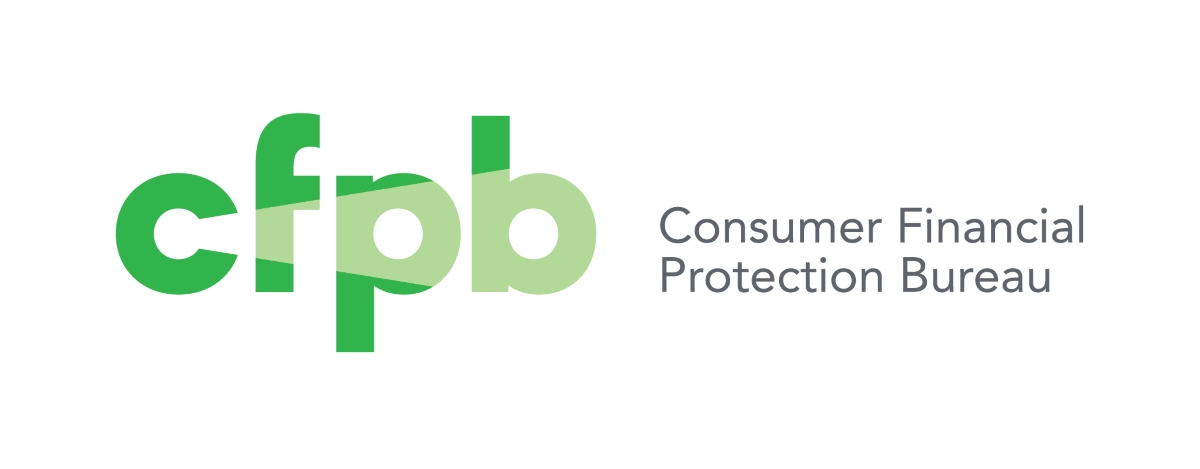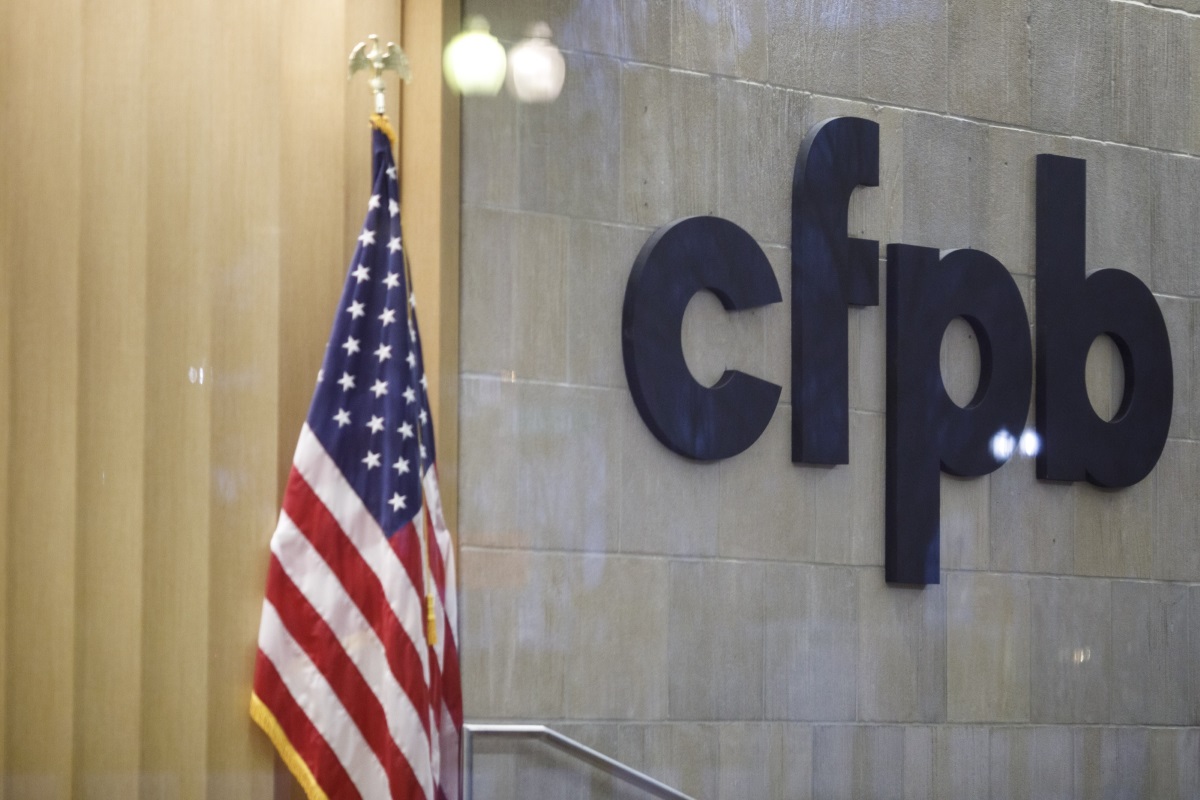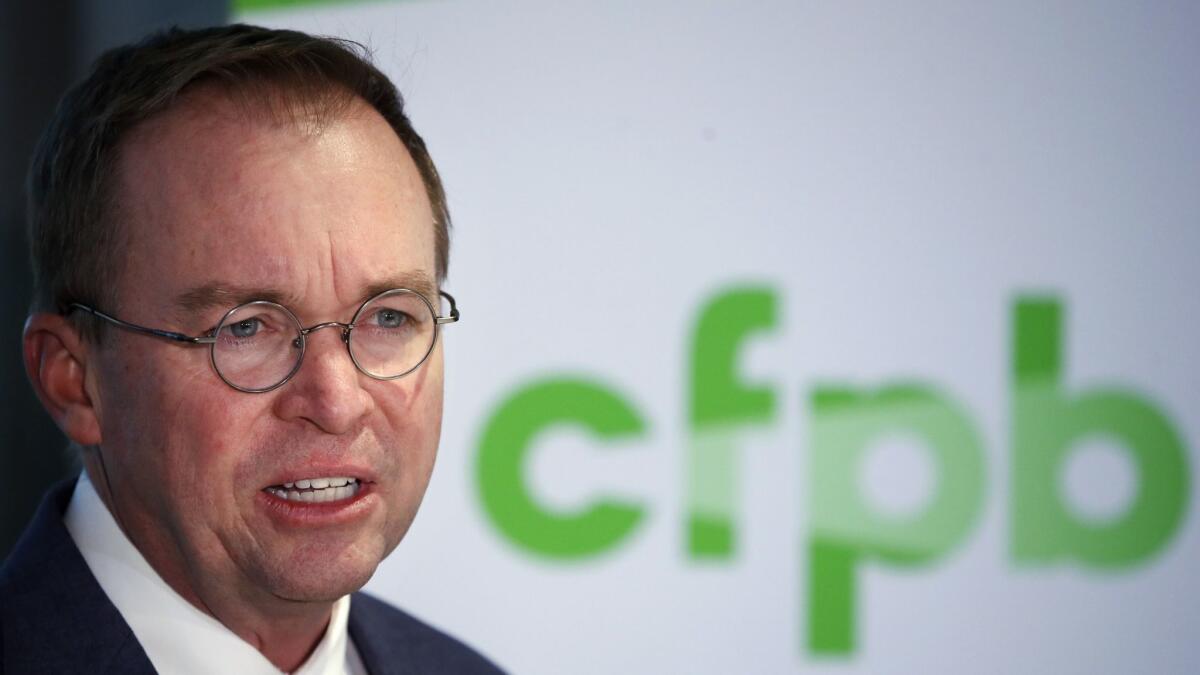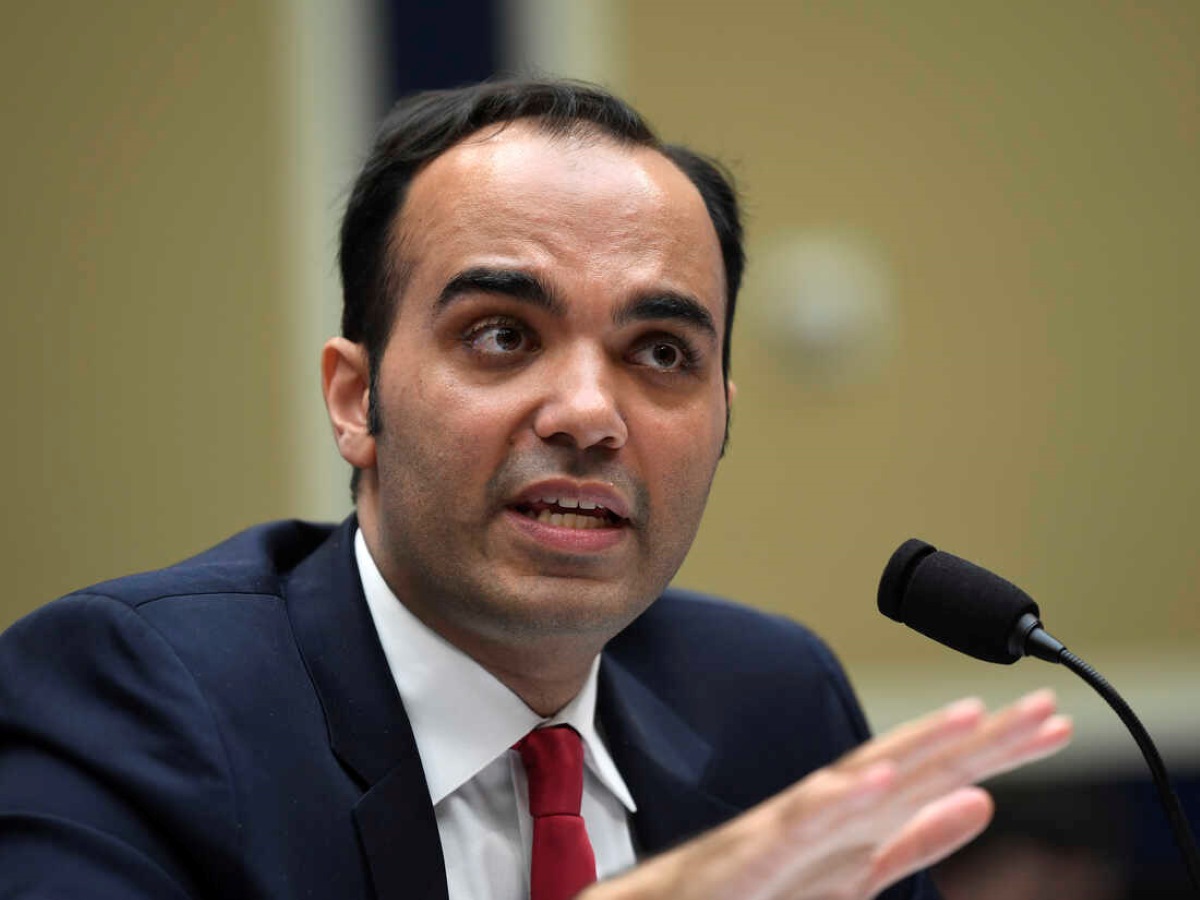Home>Finance>How Is The Consumer Financial Protection Bureau Funded?


Finance
How Is The Consumer Financial Protection Bureau Funded?
Modified: March 1, 2024
Discover how the Consumer Financial Protection Bureau is funded and gain insights into the financing methods used in the world of finance.
(Many of the links in this article redirect to a specific reviewed product. Your purchase of these products through affiliate links helps to generate commission for LiveWell, at no extra cost. Learn more)
Table of Contents
- Introduction
- Role and Purpose of the Consumer Financial Protection Bureau
- Funding Structure of the Consumer Financial Protection Bureau
- Funding Sources of the Consumer Financial Protection Bureau
- Appropriations Process for the Consumer Financial Protection Bureau
- Criticisms and Debates Surrounding the Funding of the Consumer Financial Protection Bureau
- Conclusion
Introduction
The Consumer Financial Protection Bureau (CFPB) plays a crucial role in safeguarding consumer interests and promoting transparency within the financial industry. Established in 2011 under the Dodd-Frank Wall Street Reform and Consumer Protection Act, the CFPB is a federal agency tasked with enforcing consumer financial protection laws and ensuring fair treatment for consumers in financial transactions.
The CFPB’s funding structure has been subject to scrutiny and debate since its inception. Unlike most federal agencies, the CFPB does not rely on congressional appropriations for its funding. Instead, it has its own independent funding source, which grants it a considerable amount of autonomy in its operations.
In this article, we will explore the funding structure of the Consumer Financial Protection Bureau, the sources of its funding, and the appropriations process it follows. We will also examine the criticisms and debates surrounding its funding model.
By understanding the funding mechanisms of the CFPB, we can gain insight into the agency’s operations, its ability to carry out its mission effectively, and the implications of its funding structure on its independence and accountability.
Role and Purpose of the Consumer Financial Protection Bureau
The Consumer Financial Protection Bureau (CFPB) was created with the primary objective of protecting consumers in the financial marketplace. Its role is to enforce federal consumer financial laws and ensure that consumers are treated fairly and have access to transparent financial products and services.
The CFPB has a wide range of responsibilities, including:
- Preventing unfair, deceptive, and abusive practices: The CFPB works diligently to identify and take action against financial institutions that engage in unfair or deceptive practices, ensuring that consumers are not exploited or misled.
- Promoting transparency and clear disclosures: The CFPB aims to make financial products and services more transparent by requiring companies to provide clear and concise information about fees, terms, and risks. This empowers consumers to make informed decisions.
- Supervising financial institutions: The CFPB oversees banks, credit unions, and other financial entities, ensuring compliance with consumer protection laws. Through examinations and reports, it monitors the practices of these institutions and takes enforcement actions when necessary.
- Handling consumer complaints: The CFPB operates a consumer complaint database where individuals can report grievances against financial institutions. It investigates these complaints, facilitates resolution, and uses the data to identify patterns of consumer harm.
- Providing financial education and empowerment: The CFPB works to educate and empower consumers by providing them with resources and tools to make informed financial decisions. It conducts financial literacy programs and offers online resources to help individuals navigate the complexities of the financial landscape.
Overall, the CFPB seeks to level the playing field for consumers in the financial marketplace, ensuring they have access to fair and transparent financial products and services. By holding financial institutions accountable and promoting consumer empowerment, the CFPB plays a vital role in protecting the interests of consumers.
Funding Structure of the Consumer Financial Protection Bureau
The funding structure of the Consumer Financial Protection Bureau (CFPB) sets it apart from most other federal agencies. Unlike traditional agencies that rely on congressional appropriations, the CFPB receives its funding from a different source: the Federal Reserve.
Under the Dodd-Frank Act, the CFPB is authorized to receive funding from the Federal Reserve’s operating expenses. Each fiscal quarter, the CFPB makes a funding request to the Federal Reserve’s Board of Governors, which determines the amount of funding to allocate to the bureau.
This funding structure grants the CFPB a considerable degree of financial autonomy. It allows the agency to operate independently from the political appropriations process, reducing the potential for undue influence on its operations.
However, this funding model has attracted scrutiny and criticism. Some argue that the CFPB’s funding arrangement lacks adequate oversight, as it does not undergo the rigorous appropriation process that other government agencies do. Critics argue that this lack of accountability could potentially enable the CFPB to act without sufficient checks and balances.
To address these concerns, provisions have been introduced to alter the CFPB’s funding structure. Some proposals have suggested subjecting the bureau to the traditional appropriations process, which would require it to seek funding from Congress. This change would make the CFPB’s budget subject to more direct congressional influence.
However, proponents of the CFPB’s current funding structure argue that it enhances the agency’s independence. By receiving funding from the Federal Reserve, the CFPB can carry out its mission without being subject to political pressures that could compromise its ability to protect consumers effectively.
Despite the ongoing debates over its funding structure, the CFPB’s primary focus remains on its responsibilities, ensuring consumer protection and promoting transparency in the financial marketplace. The funding structure of the CFPB plays a significant role in shaping the agency’s operations and independence, and it continues to be a subject of contention in the realm of financial regulation and oversight.
Funding Sources of the Consumer Financial Protection Bureau
The primary funding source of the Consumer Financial Protection Bureau (CFPB) is the Federal Reserve’s operating expenses. This funding arrangement, established under the Dodd-Frank Act, grants the CFPB a stable and independent source of funding, allowing it to carry out its mission of protecting consumers in the financial marketplace.
Under the Dodd-Frank Act, the Federal Reserve is required to transfer a portion of its operating expenses to the CFPB. This allocation of funds is determined through a formula specified in the law. The CFPB then submits a funding request to the Federal Reserve’s Board of Governors each fiscal quarter, specifying the amount it needs for its operations.
In addition to the Federal Reserve’s operating expenses, the CFPB also has the authority to collect and retain certain fees from the entities it regulates. For instance, the agency has the power to assess fees on larger financial institutions, such as banks and credit unions, to support its supervision and examination activities.
These fees serve as an additional source of funding for the CFPB. However, it’s important to note that the fees collected from financial institutions are not the primary funding source for the agency. The bulk of the CFPB’s funding still comes from the Federal Reserve’s operating expenses.
The funding provided by the Federal Reserve enables the CFPB to have a stable and predictable budget, free from the uncertainties associated with the traditional appropriations process. It allows the agency to plan and execute its activities with greater independence, focusing solely on fulfilling its consumer protection mandate.
Moreover, the funding structure of the CFPB ensures that it is not reliant on industry fees or interests for its operations. This independence from external funding sources is designed to protect the agency’s ability to act in the best interests of consumers and to avoid potential conflicts of interest.
While the current funding structure of the CFPB has faced criticism and calls for changes, it remains an essential element of the agency’s ability to carry out its mission effectively. By relying on the Federal Reserve’s operating expenses, supplemented by fees collected from regulated entities, the CFPB maintains its financial independence and is better positioned to enforce consumer protection laws and promote accountability in the financial industry.
Appropriations Process for the Consumer Financial Protection Bureau
The Consumer Financial Protection Bureau (CFPB) operates under a unique funding structure that sets it apart from most federal agencies. Unlike traditional agencies that rely on the congressional appropriations process, the CFPB receives its funding from the Federal Reserve’s operating expenses, which grants it a level of financial independence.
Due to this unique funding arrangement, the CFPB does not go through the typical appropriations process where Congress allocates a budget for the agency. Instead, the CFPB submits funding requests directly to the Federal Reserve’s Board of Governors on a quarterly basis.
When preparing its funding request, the CFPB takes into account various factors such as its operational needs, staffing requirements, program priorities, and projected expenditures. The agency provides a detailed justification for the requested amount based on these considerations.
Once the CFPB submits its funding request, the Federal Reserve’s Board of Governors reviews and evaluates it. The board assesses the requested amount and determines the funding allocation for the CFPB’s operations. The allocated funds are transferred to the CFPB to support its activities and initiatives.
It’s important to note that the Federal Reserve’s funding allocation for the CFPB is subject to oversight and review. The Consumer Financial Protection Bureau is required by law to provide periodic reports to Congress, detailing its financial activities and expenditures. These reports serve to enhance transparency and accountability in the use of the allocated funds.
While the CFPB’s funding process does not follow the traditional appropriations process, its operations are not completely insulated from congressional oversight. Congress still maintains the authority to conduct oversight hearings, review the agency’s performance, and request additional information regarding its finances and activities.
Efforts have been made in the past to subject the CFPB to the regular appropriations process, which would require the agency to seek funding from Congress. This change would introduce a more direct congressional oversight mechanism and potentially alter the CFPB’s autonomy.
Overall, the appropriations process for the Consumer Financial Protection Bureau differs from other federal agencies due to its reliance on the Federal Reserve’s operating expenses. By receiving funding outside the traditional appropriations process, the CFPB maintains a certain degree of financial independence, allowing it to focus on its mission of protecting consumers in the financial marketplace.
Criticisms and Debates Surrounding the Funding of the Consumer Financial Protection Bureau
The funding structure of the Consumer Financial Protection Bureau (CFPB) has been the subject of criticism and debate since its establishment. While the bureau’s funding model is designed to provide independence and stability, it has also raised concerns regarding accountability and oversight.
One of the main criticisms is that the CFPB’s funding is not subject to the traditional appropriations process. Unlike most federal agencies, which rely on Congress to allocate their budgets, the CFPB receives its funding from the Federal Reserve’s operating expenses. Some argue that this setup grants the CFPB too much independence and shields it from proper congressional oversight.
Opponents of the current funding structure argue that the lack of direct congressional appropriations undermines the bureau’s accountability. They believe that the CFPB should be subject to the same budgetary scrutiny as other government agencies, allowing elected representatives to have a say in the allocation of taxpayer funds.
Furthermore, critics argue that the funding arrangement makes the CFPB less responsive to public concerns. Without the need to justify its budget to Congress, the bureau may operate without sufficient checks and balances. This has led to calls for more transparency and accountability in the CFPB’s financial decision-making processes.
Proposals have been put forth to change the CFPB’s funding structure and make it subject to congressional appropriations. Supporters of this approach argue that it would provide a stronger avenue for oversight and allow Congress to have a more direct say in the agency’s budgetary decisions.
However, proponents of the CFPB’s current funding structure argue that its independence is essential to its effectiveness. They contend that by removing the bureau from the political appropriations process, it can better protect consumers without undue interference or influence from financial industry stakeholders.
Additionally, supporters argue that the funding arrangement allows the CFPB to focus solely on its mission of consumer protection. Without the need to navigate the complexities of the appropriations process, the bureau can direct its resources and efforts towards enforcing consumer financial protection laws and advancing its initiatives.
While the debate over the CFPB’s funding structure continues, it is important to consider the potential implications of any changes. Altering the funding model could impact the agency’s independence, its ability to adapt swiftly to emerging consumer protection needs, and its overall effectiveness in safeguarding consumer interests.
Ultimately, finding the right balance between autonomy and accountability in the funding of the Consumer Financial Protection Bureau is a complex issue. It requires careful consideration of the bureau’s mission, the needs of consumers, and the importance of appropriate oversight in maintaining public trust.
Conclusion
The Consumer Financial Protection Bureau (CFPB) plays a crucial role in protecting consumer interests and ensuring fairness in the financial marketplace. Its funding structure, which differs from traditional federal agencies, has been a topic of discussion and debate.
By relying on the Federal Reserve’s operating expenses, the CFPB enjoys a level of financial independence. This funding arrangement allows the bureau to operate without being subject to the uncertainties and political influences of the congressional appropriations process.
The CFPB’s funding structure has drawn criticism, with concerns raised about the lack of direct congressional oversight and accountability. Critics argue that subjecting the bureau to the appropriations process would enhance transparency and ensure proper checks and balances.
On the other hand, proponents of the CFPB’s funding model assert that its independence is essential for effectively fulfilling its consumer protection mandate. They believe that without direct political influence, the bureau can act objectively and prioritize the best interests of consumers.
While the debates surrounding the funding structure of the CFPB continue, it is clear that its primary focus remains on protecting consumers and promoting transparency. The agency plays a vital role in enforcing consumer financial protection laws, preventing unfair practices, and empowering individuals with financial knowledge and resources.
Ultimately, striking the right balance between financial autonomy and accountability is crucial for the Consumer Financial Protection Bureau. Any changes to its funding structure should consider the potential impact on the agency’s ability to fulfill its mission effectively.
As the financial landscape evolves, it is important to continue evaluating the funding mechanisms of the CFPB. This will ensure that the agency remains well-equipped to adapt to emerging challenges and provide the necessary consumer protections in an ever-changing financial world.
Overall, the funding structure of the Consumer Financial Protection Bureau plays a significant role in determining its independence, accountability, and effectiveness. It is an ongoing topic of discussion and will continue to shape the agency’s operations and impact on consumer protection for years to come.














